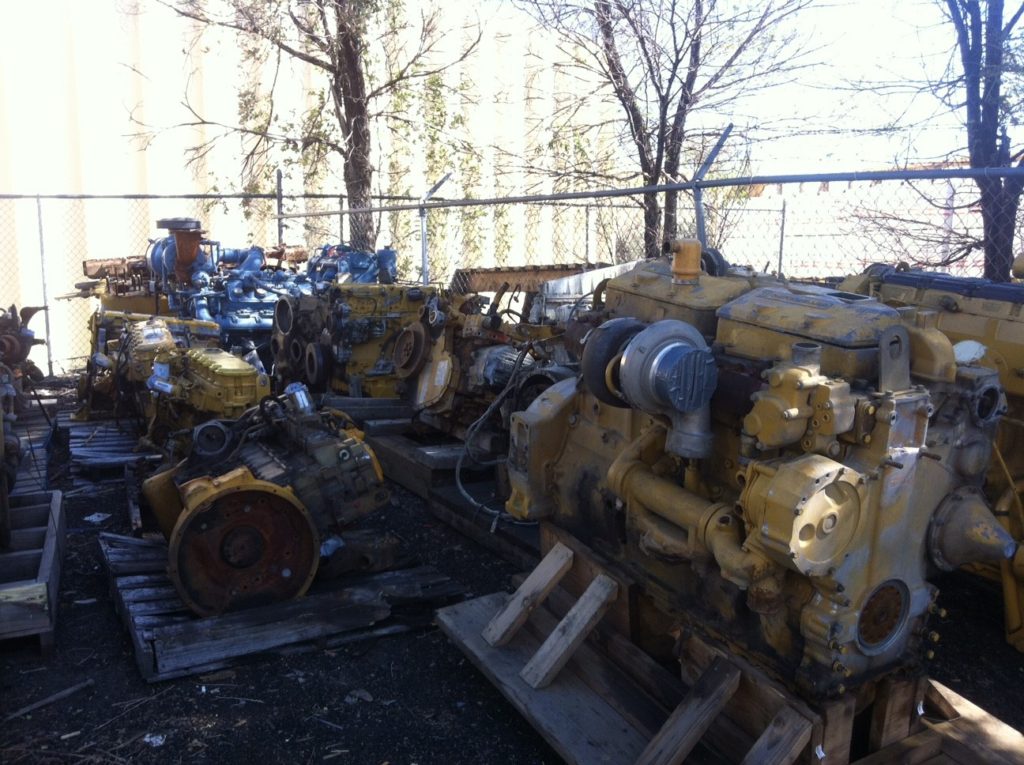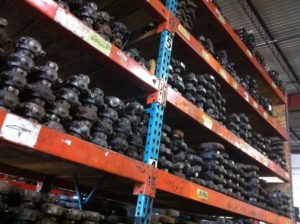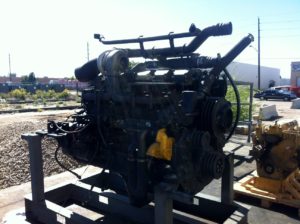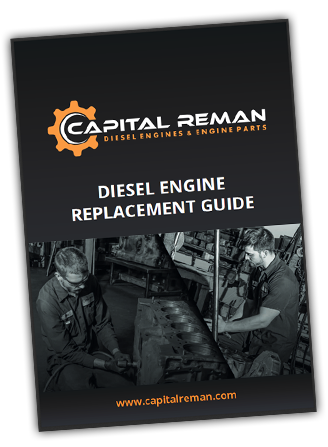Big OEM Diesel Core Management Changes Ahead
 The key to the remanufacturing business is core supply. As the years roll by the supply of older CAT, Cummins, Detroit, International and John Deere Cores will slowly dwindle. Many of the diesel engines still on the road today such as CAT 3126, C7, C13, Cummins 855, N14, and the Detroit Series 60 Engines are now 25-30 years old. Even the popular dual cam Cummins ISX engine is 16 years old now, first introduced in 2001.
The key to the remanufacturing business is core supply. As the years roll by the supply of older CAT, Cummins, Detroit, International and John Deere Cores will slowly dwindle. Many of the diesel engines still on the road today such as CAT 3126, C7, C13, Cummins 855, N14, and the Detroit Series 60 Engines are now 25-30 years old. Even the popular dual cam Cummins ISX engine is 16 years old now, first introduced in 2001.
Historically, the largest supply of diesel engine cores has been located in the United States. However, when the Great Recession of 2008 happened many of those old diesel engine cores were shipped overseas or scrapped for a quick buck. Salvage facilities which usually kept a tight grip on their cores were selling them by the container loads to places like South America, China, Africa and the Middle East. Used and salvaged equipment is big business in 2nd and 3rd world countries where budgets are tighter and companies are more apt to repair older equipment.
When the economy recovered the core supply never came back to American shores. For example Ag equipment engines or small skid steer cores are quite hard to come by here in the States even though demand is high. He who controls cores is King. Many remanufacturing companies operate on an “Exchange” basis whereas the customer will send in their used core engine when they receive a brand new engine in return. The company can then use the existing core for another build thus keeping a constant rotation of inventory cores. However, if a customer has a hole in the block, has damaged the crankshaft or cylinder head beyond repair the core is good for nothing but scrap. Overtime there are simply less and less used core engines available for remanufacturing. The complexity of the remanufacturing market is changing as well with newer more complicated electronic engines models. Engine manufacturer, Navistar, is recognizing the changing dynamic of the diesel engine core supply market and is aiming to keep a tighter grip on its cores. Navistar’s General Manager of Core and Remanufacturing Chintan Sopariwala, stated that they aim to do a better job in 2017 of maintaining an active log of their cores on the market. OEMs are losing out to independent remanufacturing facilities simply by not having control over their cores at the end of the product lifecycle. Sopariwala said, “Their goal is to reduce core fallout to less than 1%... that means 99% of Navistar cores should come back.” In 2015 the company recycled over 70 million pounds of used truck parts and engines.
Engine manufacturer, Navistar, is recognizing the changing dynamic of the diesel engine core supply market and is aiming to keep a tighter grip on its cores. Navistar’s General Manager of Core and Remanufacturing Chintan Sopariwala, stated that they aim to do a better job in 2017 of maintaining an active log of their cores on the market. OEMs are losing out to independent remanufacturing facilities simply by not having control over their cores at the end of the product lifecycle. Sopariwala said, “Their goal is to reduce core fallout to less than 1%... that means 99% of Navistar cores should come back.” In 2015 the company recycled over 70 million pounds of used truck parts and engines.
The new core management programs consists of two strategies: location based tracking and a contractual agreement with customers. The new plan will be able to track customers based upon account number and location code. Having this information will give corporate management the ability to see purchase and return history, core eligibility and fall out rates as well as service upgrades. However, this doesn’t keep customers from selling or scrapping old diesel engine cores which might fall into the hands of independent facilities. Navistar's solution is something called "The Memorandum of Understanding". The Memorandum of Understanding is Navistar’s way of reaching out to independent remanufacturing facilities. In 2015 the company connected with truck and glider manufacturers as well as aftermarket companies to extend the olive branch of remanufacturing peace so to speak. Navistar is providing a way for independent repair garages to access proprietary service information for model 2010 and later trucks and busses over 10,000 lbs. This information is not free but a yearly subscription option. Independent facilities will also have to invest in dealer training programs and buy high specialized tools to work on OEM engines.
However, this doesn’t keep customers from selling or scrapping old diesel engine cores which might fall into the hands of independent facilities. Navistar's solution is something called "The Memorandum of Understanding". The Memorandum of Understanding is Navistar’s way of reaching out to independent remanufacturing facilities. In 2015 the company connected with truck and glider manufacturers as well as aftermarket companies to extend the olive branch of remanufacturing peace so to speak. Navistar is providing a way for independent repair garages to access proprietary service information for model 2010 and later trucks and busses over 10,000 lbs. This information is not free but a yearly subscription option. Independent facilities will also have to invest in dealer training programs and buy high specialized tools to work on OEM engines.
What’s going to be tough in the future for independent facilities is the ability to remanufacturer more complex electronic engines. Newer engines, like the Paccar MX Series or Cummins X12/X15 are very complex electronic engines with proprietary emissions control systems. Diesel engines today are often more computer than machine. The challenge will be learning how to remanufacturer these engines in clean rooms, dealing with complex fuel systems and understanding the complexities of the emissions systems such as the SCR (Selective Catalytic Reduction) and DPF (Diesel Particulate Filters). Only in the past few years have the OEMs truly figured out how to solve the engineering issues regarding regeneration of exhaust gas back into the engine without losing horsepower or clogging up turbo.
Despite the challenges of emissions regulations and core inventory problems the remanufacturing business is alive and well in America. The customer will always be looking for a more cost friendly option than buying or servicing an engine directly with an OEM.




